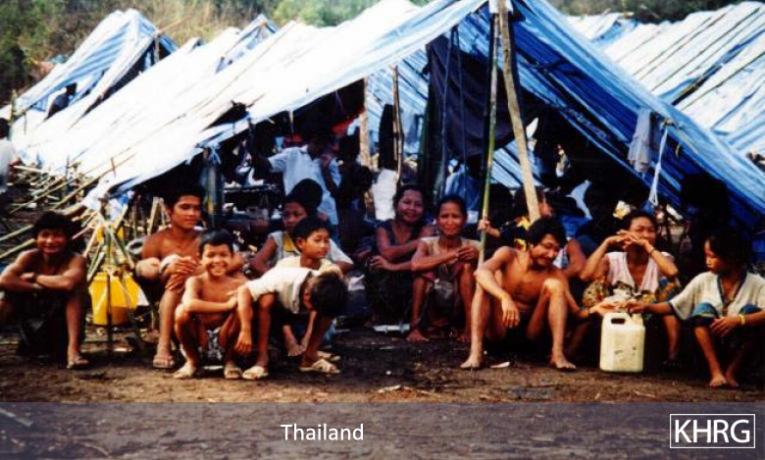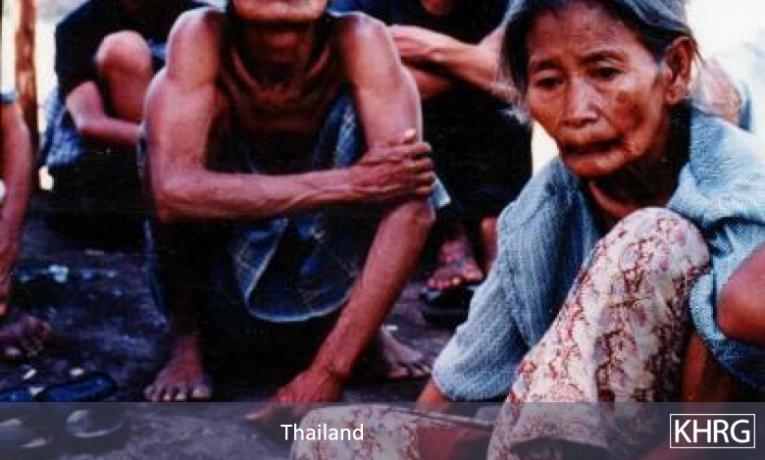This document gives descriptions for Photo Set 97-A, including refugees from the current Tenasserim offensives.
Peoples’ names given here correspond to those used in the reports; names which have been changed to protect people are enclosed in quotes. Some details have been omitted from the photo descriptions to protect the people involved. These photos may be used in any way to help the people of Burma.
Some abbreviations used in the photo descriptions:
SLORC = State Law & Order Restoration Council, Burma’s military junta
DKBA = Democratic Kayin (Karen) Buddhist Army, Karen group allied to SLORC
KNU = Karen National Union, main Karen opposition organization
KNLA = Karen National Liberation Army, army of the KNU
KNPP = Karenni National Progressive Party, Karenni organization which is still fighting SLORC.
At the same time as it launched its Dooplaya District offensive, SLORC launched a mass offensive against Karen-held regions in Tenasserim Division, otherwise known as KNLA 4th Brigade area. They managed to capture the 4th Brigade headquarters and most Karen-held territory, but here they faced much stiffer resistance and the fighting is still ongoing. Several thousand new refugees fled across the Thai border, and many of them were denied access or forcibly repatriated by the Thai Army 9th Division. Most of the new refugees are villagers from villages in formerly KNU-held territory, but they have also been joined by many people who had already fled the free-fire zones of Palauk, Palaw, Mergui and Tenasserim areas (see ‘Tenasserim’ and related photos above) and were internally displaced along the Tenasserim River, only to have to flee again now. KHRG interviewed one woman from Aw Pu village in one of the free-fire zones who told us that she’d had to run from SLORC 7 times since September 1996. There is no indication yet of how many more times they will still have to flee. All photos relate to the report "Refugees from SLORC Occupation" (‘Offensives’).
Photo #132: Wounded Karen 4th Brigade soldier heading for treatment. Fighting in the region has been fierce and SLORC has reportedly sustained very heavy casualties. Many SLORC troops have also found their supply lines overextended and cut, so they are now largely being provisioned from Thailand by the Thai Army’s 9th Division. [Photo: Burma Initiative]
Photo #133: Escaped Burman porter, age 24, showing scars from carrying SLORC’s 120mm mortar shells for several weeks. He was fed only 5 spoonfuls of rice twice a day and says he witnessed at least 30 other porters die along the way. His group of over 70 porters included 11 women and one 75-year-old man. SLORC rounded up thousands of civilians in the streets to be porters for this offensive from towns all along the Andaman seaboard, from Moulmein to Mergui and beyond. Public vehicles travelling north or south along all main roads were also regularly halted by the Army and all men taken off to be taken away as porters. This man was taken from his village in Thayet Chaung township, south of Tavoy, when he was leaving a video hall. [Photo: Burma Initiative]
Photo #134: Escaped Burman porter, age 14. He was captured by police near Ye Pyu while going to visit friends in early February, locked up in jail for 3 days and then sent to carry rice and mortar shells for #104 Battalion until he escaped several weeks later. [Photo: Burma Initiative]
Photo #135: Two escaped porters, both former convicts from Rangoon Prison (note that they are still wearing their white prison longyis). They say they were both beaten often by the soldiers until they escaped on 5 March. [Photo: Burma Initiative]
Photo #136: Some of the Karen refugees who had just been forcibly repatriated by the Thai Army setting up shelters at Hta Ma Pyo Kee in early March. Many refugees had fled to Bong Ti much further north in Thailand, but on 26 February the Thai Army forced all boys and men aged 10 and above back across the border into a combat zone, telling them to fight or surrender. Then over 800 others, mainly the women and children who remained, were told they would be taken to a safer place in Thailand and put on trucks, which then drove them southward to the Thai village of Na Hay where they were summarily pushed back across the border by Thai troops. [Photo: Burma Initiative]














